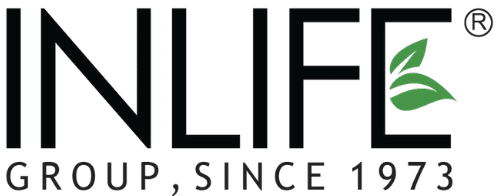Health
Vitamin D Deficiency – The Rising Threat!
Vitamin D is constantly making rounds in research news buzz, sometimes raining its benefits and sometimes linked to a deficiency thunderbolt.
The research team led by Dr. Kristina Hoffmann of the Mannheim Institute of Public Health (MIPH), Medical Faculty Mannheim, Heidelberg University, analyzed nearly 200 studies on vitamin D from 44 countries involving more than 168,000 people.
According to the latest review analysis published in the British Journal of Nutrition, “One-third of the global population may have low levels of vitamin-D”. So, we need to know the causes of deficiency of vitamin D.
Vitamin D Deficiency Risks
To list a few, a recent study published in the American Journal of Clinical Nutrition, found Vitamin D deficiency to be one of the major causes of breast cancer among women in Saudi Arabia. So, now we know the effects of this deficiency.
A study carried out by Natasja cvan School, PhD, of VU University Medical Center in Amsterdam, and colleagues, published in the Journal of Endocrinology and Metabolism shows that that low levels of vitamin D to cause functional limitations in older citizens.
Pregnant women with a history of allergy and eczema are being urged to ensure their vitamin D levels are correct because there are solid studies to show that the lower the level of vitamin D in the womb and in the newborn, the higher the risk of developing eczema and asthma as a child. Vitamin D deficiency in pregnancy should also be avoided.
Benefits of Vitamin D
Researchers from Boston University School of Medicine found that higher vitamin D levels help avert illnesses, including cancer, autoimmune disease, cardiovascular disease and infectious diseases.
The “sunshine vitamin” has been linked to bone health and a stronger immune system, plus a decreased risk of heart disease, psoriasis and arthritis.
But 37.3 percent of the world’s population is not getting enough Vitamin D.
Despite the consistent effort of researchers in providing evidence-based awareness to overcome the deficiency of vitamin D, it continues to be a problem in today’s world and the risks associated with it.
Its not that deficiency wasn’t prevalent before, but the increased awareness among people about health and wellbeing is what makes up to it. People now know about the signs of vitamin D deficiency and also their symptoms. What can be the solution for it?
Sources of Vitamin D
An effective strategy to prevent vitamin D deficiency and insufficiency is to obtain good sun exposure, ingest foods that contain vitamin D, and take a vitamin D supplement.”

Besides the old-school sources, sunshine and milk, vitamin D can be found naturally but in very few foods. Fish, mushrooms and eggs make a very good list out of those few.
Help yourself with the following list of foods to get sufficient vitamin D reserves besides bypassing your concerns like sunburn and lactose intolerance. Vitamin d deficiency cause fatigue and depression.
-
Fish
Fresh and canned fish, especially, fatty fish like Salmon, Sardines, Mackerel, and Tuna have appropriate amounts of Vitamin D i.e., more than 50 percent of the daily-recommended dose of the vitamin in one serving. For instance, a tuna sandwich or a grilled salmon weighing about three ounces can do the needful.
-
Mushrooms
Mushrooms absorb vitamin D when exposed to sunlight. Portobello mushrooms, which are grown in the sun, are rich in vitamin D.
According to an Australian scientist, professor Rebecca Mason, head of physiology at Sydney Medical School and past president of the ANZ Bone and Mineral Society, Eating three or four button mushrooms a day is sufficient to make vitamin D for the average person’s estimated daily needs.
-
Fortified orange juice
Some brands of tetra-packed orange juice have vitamin D added to it. Though other juices too have the same, orange juice helps retain the ingredient and fortifies it supplying you with one-sixth of your daily dose.
-
Eggs
Eggs have a considerable amount of vitamin D., However; one has to be careful in taking egg yolk in case of blood pressure issue or high cholesterol.
-
Organ Meat
Organ meats, like beef liver, contain a considerable amount of vitamin D. Though most don’t prefer to eat organ meat, people who love it can substitute it easily for milk for vitamin D.
Vitamin D intake can also be increased by eating foods fortified with vitamin D. A recent systematic review found that food fortification with vitamin D (especially in milk) is effective in significantly increasing 25(OH) D levels in the population. Foods like cereals, juices and certain dairy produce also come with vitamin D fortification.
Now talking about supplements, its good to go for supplements upon your physician’s advice. Doctor would prescribe a test (25-hydroxy Vitamin D test) to determine vitamin D levels in the body and accordingly dose is prescribed. One should know reasons for vitamin D deficiency and also the various treatments.
Well, the aim of the article is to convey that there is an urge to have adequate levels of vitamin D for everyone.
Its nothing harm in knowing things.
So, take care!
Share this article among your network to spread the awareness of rising vitamin D deficiency.


